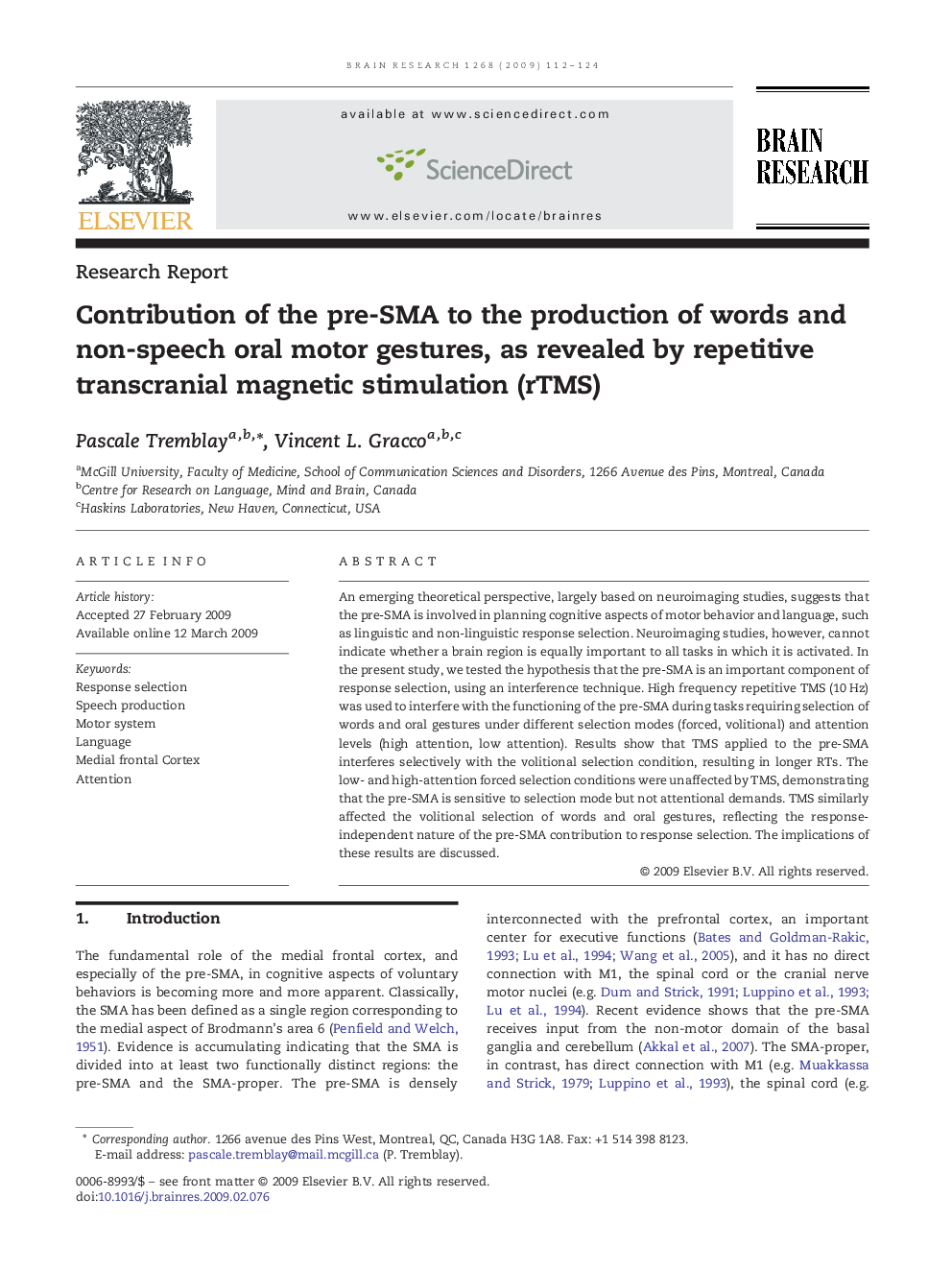| Article ID | Journal | Published Year | Pages | File Type |
|---|---|---|---|---|
| 4328473 | Brain Research | 2009 | 13 Pages |
Abstract
An emerging theoretical perspective, largely based on neuroimaging studies, suggests that the pre-SMA is involved in planning cognitive aspects of motor behavior and language, such as linguistic and non-linguistic response selection. Neuroimaging studies, however, cannot indicate whether a brain region is equally important to all tasks in which it is activated. In the present study, we tested the hypothesis that the pre-SMA is an important component of response selection, using an interference technique. High frequency repetitive TMS (10Â Hz) was used to interfere with the functioning of the pre-SMA during tasks requiring selection of words and oral gestures under different selection modes (forced, volitional) and attention levels (high attention, low attention). Results show that TMS applied to the pre-SMA interferes selectively with the volitional selection condition, resulting in longer RTs. The low- and high-attention forced selection conditions were unaffected by TMS, demonstrating that the pre-SMA is sensitive to selection mode but not attentional demands. TMS similarly affected the volitional selection of words and oral gestures, reflecting the response-independent nature of the pre-SMA contribution to response selection. The implications of these results are discussed.
Related Topics
Life Sciences
Neuroscience
Neuroscience (General)
Authors
Pascale Tremblay, Vincent L. Gracco,
